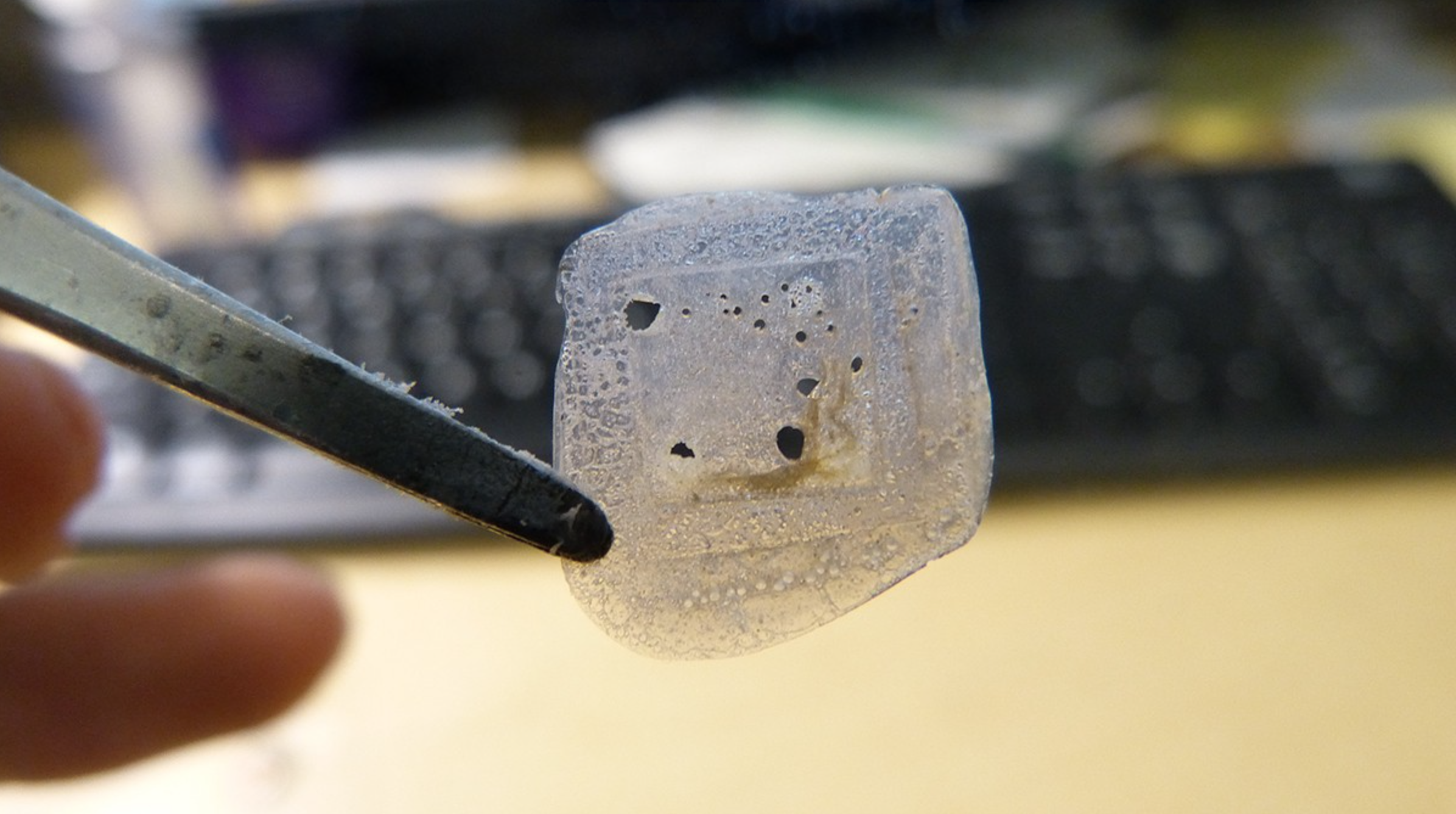Repairing – not recycling – is the first step to tackling e-waste from smartphones. Here’s why.

Roughly four in ten people globally owned a smartphone in 2018 and that number continues to grow rapidly. This growth is driven by steady sales of the devices – more than 1 billion each year – putting hand-sized computers in people’s pockets.
It is difficult to overstate the impact smartphones have had on human behaviour: they are part of a digital transformation which has revolutionized communications, financial inclusion, and agricultural productivity, to name but a few examples. But as smartphone sales have skyrocketed, so has the device’s contribution to waste streams and carbon emissions.
Smartphones have the potential to power economies and improve lives without damaging the earth – but only if we reconsider their lifecycles and think beyond recycling.
Emissions and waste
From a carbon emissions perspective, smartphones produce 85-95% of their emissions in the production phase. The total annual carbon footprint of manufacturing mobile phones is sizeable, equal to at least the annual carbon emissions of a small country.
Smartphones also contribute to approximately 10% of global e-waste, a number that was estimated to weigh more than 50 million tonnes in 2019. This means that waste streams equivalent to more than 300,000 double decker buses are created every year by smartphones and similar devices. These streams are both highly polluting and highly wasteful: the potential value of raw materials in e-waste was valued at USD 57 million in 2019. Meanwhile, recycling rates across electronics stood at only 17% in 2019, meaning the vast majority of this value is not being reaped.
As sales have grown, the precious metals and materials required to produce smartphones have become more scarce. The microchip shortage which is most prominently affecting the car industry is also taking its toll on smartphone manufacturers who are struggling to meet demand. When it comes to precious metals, the Royal Society of Chemistry estimates that 6 of the key elements for mobile phones will run out in the next 100 years. And it is worth mentioning, these elements will be required for many applications key to the energy transition, some of which do not even exist today.
An opportunity
While recycling smartphones is required when phones truly reach end of life stage, keeping phones in use for longer (and therefore minimizing the number which actually need to be recycled) keeps materials in use for longer, reduces waste streams, and means less energy is required for recycling processes.
Extending the smartphone’s lifespan should therefore be a key aim for all stakeholders trying to reduce e-waste. In the USA, smart phones are replaced approx. every three years. The re-start project estimates that on a global level, increasing the lifespan of a smartphone by 33% (e.g. replacing after 4 years instead of 3) could prevent annual carbon emissions equal to the annual emissions generated by the entire country of Ireland. Additionally, using phones for longer periods and throwing them away less regularly can reduce the waste streams needing to be recycled. (Assuming 60 years of smartphone ownership, increasing smartphone lifespan from three to four years would represent a change from 20 smartphones to 15 smartphones, a 25% lifetime decrease in number of devices used).
Extending smartphone lifespans is not an easy task, however. Firstly, manufacturers have traditionally used planned obsolescence to ensure devices only perform for a certain number of years, thereby ensuring a steady stream of future sales. Secondly, phones are not typically designed with repair or reuse in mind. This has meant that it is often very difficult or even impossible to swap parts which stopped working. In practice, this means that a poorly functioning battery or jack connection can spell the end of life for an entire device, even if the rest of the its components work perfectly.
Those pushing for repairs do not have an easy road. Few producers of smartphones currently have the infrastructure (e.g. refurbishment facilities) to repair/refurbish phones at a large scale (although it could be an opportunity on a retailer level). Manufacturers have also at times been resistant to providing spare parts to third parties, essentially maintaining a monopoly over repair, and sometimes raising the price of repair to non-tolerable levels. As a result, consumers have only had access to limited repair or refurbishment services, and have little knowledge of which services are reputable and how much those services should cost. As Clara Amend, a researcher in sustainable smartphones from the University of Leuphana explains, to eliminate e-waste, repairs must be inexpensive and convenient for makers, service providers and consumers.
Changes ahead
Access to repairs is slowly changing, particularly in Europe, as countries embrace the circular economy, an approach to resources that seeks to eliminate waste and keep all materials in continual circulation.
Smartphone manufacturers, led by the trailblazing Fairphone – a company which has popularized repairable and upgradeable smartphones – are increasingly looking to incorporate modular design into their phones. Malfunctioning parts from phones can then be swapped out individually, and then refurbished for usage in new/refurbished phones or in other applications (e.g. ticket scanners).
Additionally, services for electronics repair are also slowly becoming more accessible to consumers: marketplaces are popping up which connect consumers to reputable services, meaning consumers are better equipped to make decisions surrounding quality of repair and price.
Furthermore, the EU’s ‘Right to repair’, enshrined within its trailblazing Circular Economy Plan, is already triggering change in Europe. In France, a self-declared repairability index was introduced in 2021, which aims to inform consumers on how easy different electronic devices are to repair, providing consumers with transparency on how easily they can deal with malfunctioning devices.
Financial initiatives are showing promise as well. In Sweden, tax incentives worth up to almost 2500 EUR exist for appliance repairs, and similar (albeit less lucrative) schemes exist in Austria.
As repair is incentivized, more and more service providers should enter the market, providing higher levels of competition and driving down (currently high) prices for consumers. Self-repair should also become easier for a range of products (including smartphones), as repairability, availability of spare parts and documentation / instructions increase.
The ‘right to repair’ should also apply to software upgrades, meaning producers can no longer refuse to update software after a predetermined length of time (often five years). Such changes could keep phones in use which would otherwise be rendered useless.
Change will also require new approaches to business. Whilst phones have often been sold through 18-24-month contracts, these could simply become leases, where the phone is returned at the end of the contractual period. This would allow manufacturers to claim back all of the raw materials in their products and refurbish them for a second, third or fourth life. Using deposit schemes to incentivize the return of purchased phones is another approach to this. Leasing phones as part of a ‘phone-as-a-service’ works in a similar way.
Further ideas include providing companies with solutions to incentivize their employees to only use one phone (rather than keeping one for business and one for personal) by effectively separating the personal and business functionality of a smartphone. This could theoretically significantly reduce the need for business phones: if half of the world’s white collar workforce uses two phones (one personal, one business), over half a billion devices would no longer be required.
The way forward
Responsibility to manage these shifts lies first and foremost with producers, but requires support from government and consumers, too. Smartphones have become a form of conspicuous consumption and replacing them on a regular basis has become commonplace for many: changing this consumer(ist) mindset will be key. Governments will also need to facilitate extending lifespans, through appropriate incentives and regulation.
Smartphones and electronics may not be the most visible waste stream, but need to be addressed urgently nonetheless. As smartphone use grows, so will waste streams and their affiliated toxicity, as well as carbon emissions.
The world is sitting on a (literal) goldmine when it comes to smartphone waste streams. Ensuring these materials stay in circulation for as long as possible and then do not go to waste is both economically efficient and good for the environment. All we have to do is swipe right.
Republished with permission of the World Economic Forum. Read the original article.





